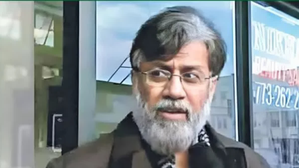Brandenburg Gate Closed — that was the headline used by the Associated Press (AP) news agency in the early hours of August 13, 1961, to announce a truly momentous event: the beginning of the construction of the
Built along the fault line between the East and West, it immediately became a symbol of oppression and division. East Germany’s National People’s Army (NVA) and construction crews loyal to the communist German Democratic Republic, or GDR, were deployed to cut off all access routes to West Berlin, initially in most locations with barbed wire. Erich Honecker, later to become East Germany’s leader, was at the head of “Operation Secure the Border.” The aim: to literally cement the division of Berlin.
That was quickly followed by construction of a steel and concrete perimeter wall with a forbidding height of just short of 3.5 meters (12 feet) that surrounded the whole of West Berlin. The aim was to prevent any more people from fleeing the GDR.
At least 2.6 million people had already done so since its founding in 1949. They sought better lives across the border in West Germany, which was officially known as the Federal Republic of Germany (FRG). A better life not just materially — but also culturally and politically. The mass exodus from East Germany had pushed it close to collapse. There were not enough doctors, not enough skilled workers. So, to prevent the situation from deteriorating further, the country’s leaders concluded that there was just one solution: the Berlin Wall.
Such aggressive rhetoric was typical of a time when the communist Soviet Union and capitalist America were caught up in a bitter rivalry to demonstrate which of the two superpowers could offer the best blueprint for a political system and society. The GDR sided with the Soviets, while the FRG was firmly allied to the American camp. The danger of a third world war and possible nuclear conflict was very real. The two sides spiralled into an arms race and there was much talk of the threat of mutually assured destruction. The Cold War, as it came to be known, would only really come to an end with the Fall of the Berlin Wall in 1989 — 28 years after it was erected. Between 1933 and 1945, Berlin was associated with the murderous Nazi control of Germany and much of the rest of Europe. After the war, however, the city was carved up and handed over to the victorious powers in the form of four sectors. The Soviets controlled the east of the city while in the west it was the Americans, British, and French who held sway. Each attempt by the communists to bring the whole of the city into their sphere of influence was thwarted by the resistance of the western allies. United States President John F. Kennedy called democratic West Berlin an “island of freedom in a communist sea.” But he, too, had to accept the reality of the Wall’s existence, just as the city’s 3 million inhabitants on either side of the “anti-fascist protection rampart” — as the 155-kilometer (96-mile) barrier was officially dubbed in the GDR.
During the 28 years that it cast its shadow over the city, at least 140 men, women and children lost their lives along the Wall. Their fate is today commemorated at the Berlin Wall Memorial on Bernauer Strasse, where a 200-meter section of the wall has been preserved. People from around the world come to this site to try and grasp what it all means.






















